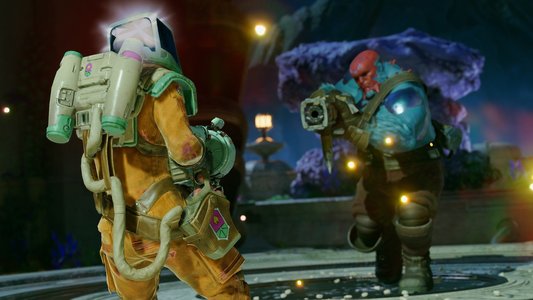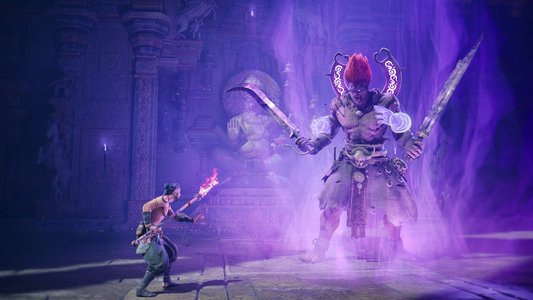[In this reprinted #altdevblogaday piece, ArenaNet game designer Daniel Achterman will share general guidelines and best practices he's picked up over the years for crafting and tuning game systems. My name is Daniel Achterman, and I'm a game designer. I've been doing gameplay and system design in a variety of genres for about 8 years, mostly RPGs, at companies like Gas Powered Games and ArenaNet. My intention with these pieces is to share specific, practical advice and techniques that game designers can use to create systems, tune content, and simplify their lives. This first piece shares some general guidelines and best practices that I've found useful. Future articles will cover topics like experience curves, calculating values for content like item stats and ability damage, and managing large amounts of game data. If you ever have a question or want to start a conversation, you can reach me in several ways:
Add a comment to this post.
Send me a message on Twitter: @DanielAchterman
Send me an e-mail at DanielAchterman@gmail.com
What Games Is This Best For? The approach to game design in these articles is analytical and methodical. It's best suited to games with a lot of content, like RPGs or strategy games. These articles are more about the hour-to-hour experience than the minute-to-minute experience, so they won't apply to many types of games. My apologies if this material doesn't directly translate to your work – I hope you can still find them valuable. The Hallmarks of Good Systems RPG and strategy games tend to have a ton of content – more than any one person can keep in their head at once. Game systems don't just define how that content works – they are a tool that designers use to generate, tweak, tune, and manage that content. From a designer's perspective, good systems should be five things: comprehensible, consistent, predictable, extensible, and elegant.
 This is the Vagrant Story weapon crafting chart. Fun game, but weapon crafting was incredibly obtuse and over-complicated.
This is the Vagrant Story weapon crafting chart. Fun game, but weapon crafting was incredibly obtuse and over-complicated.
Comprehensible. You, the designer, should understand all the parts of your system. You should know how you choose various values in your game, why you do it that way, and what other rules and content those values impact. If you want to adjust your gameplay in a specific way, you should know what to change to get that result. Consistent. Your game rules and content should function the same in all areas of your game. Armor shouldn't work differently for flying units, and the formula for gold value of items shouldn't change at high levels. This is a big part of making your game comprehensible to you. Predictable. You should be able to determine how your systems will behave in new circumstances. If you multiply experience gained by 2 in some situation, or introduce a monster with double the normal armor, you should be able to predict the results. Using simple progressions and formulas helps make predictable systems. Extensible. When you create new types of content for your game, you should be able to easily extend your existing systems to include it. Maybe you decide what your game really needs is randomly generated minibosses. You should be able to extend your existing monster content to include them easily. Extensibility makes it easier to design your game iteratively, adding new systems and content types as they are needed. Elegant. Elegant systems have a certain … je ne sais quoi. They create extremely rich situations from a small number of moving parts. Some of my favorite examples of elegant system design are 4th Edition D&D, Magic: the Gathering, and Settlers of Catan.
 The numbers – so simple! But the situations – so interesting! (http://www.flickr.com/photos/midiman/3027407135/)
The numbers – so simple! But the situations – so interesting! (http://www.flickr.com/photos/midiman/3027407135/)
Getting Started: Game Systems Follow Gameplay Creating a game's systems and content is an intimidating task. It can seem like there will be a million variables in the game, and before you can start figuring out how they'll relate to each other, you have to choose which ones your game will have in the first place. What stats will your game characters have? What will increase on level up? What types of upgrades can characters get? Items? Resources? Experience values? Gold costs? It's overwhelming.
"Begin with the end in mind." – Stephen Covey
The first step is to clarify the game you're making. While systems are the foundation of how a game works, they shouldn't be the starting point of its design. You might have a great idea for how mana regeneration will work in your game, or how leveling will be affected by weapon types. Leave those ideas aside for now, and instead ask yourself: What is the core game loop? What interesting decisions will players be making? What are the appeals you intend your game to have? Those are the aspects of your game that players engage with most immediately, so your goal when designing systems should be to support the game experience you intend. Form follows function, and systems follow gameplay. Case Study: Dungeons and Dragons

Dungeons and Dragons is about role-playing characters in a fantasy setting and going on adventures with your friends. Teamwork and cooperation are an important part of the experience. Characters perform actions in turn, with the chance of success and results of those actions defined by systems. To make cooperation matter, there are a variety of types of challenges (combat, disarming traps, social interactions) and combat roles (defender, striker, support) that characters can be strong or weak in. As a systems designer, the above description would direct my work in several ways:
To encourage teamwork, systems should allow characters to excel in certain types of challenges and combat roles, but not others.
Role-playing and non-combat play is important, so social statistics should be meaningful.
Since immersion and role-playing are important, the content of the game should be flavorful and exciting in a fantasy setting.
The math to determine the results of actions should be comprehensible and uncomplicated.
The Components of Game Systems "Game Systems" or "Mechanics" can be broken down into three components: Parameters, Rules, and Content.
Parameters: Parameters are the values that your game systems use to simulate your game, such as health, movement speed, weight, mana cost, critical hit chance, etc.
Rules: Rules are the functions and fo
No tags.







































